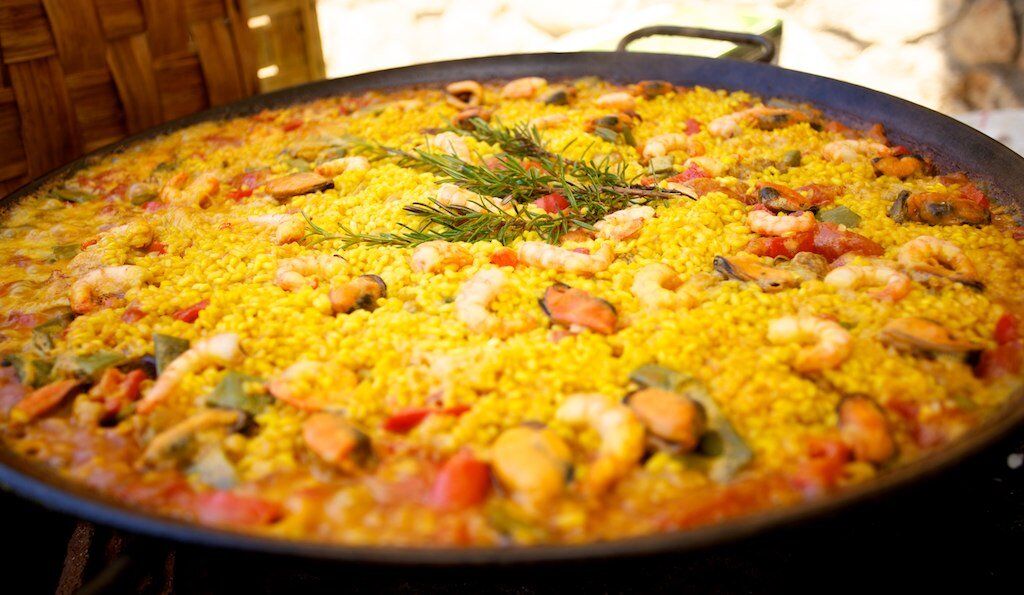Moorish delicacies come from North African influences, which date back centuries.
When journeying through southern Spain, Turkey, and France, you’ll encounter cinnamon, cumin, caraway, and cardamom flavors.
Pulses are heavily used to enhance dishes, and simmering substances collectively with such aromatics make for warming, comforting words.

I even have protected a group of recipes that will pleasantly amaze you because the flavors, textures, and components work so nicely together and are exceptionally easy on the pocket.
Turkish eggs with yogurt, sage, and chili
Turkish eggs are very stylish and visible on many menus. This dish is an abnormal aggregate of textures, but they work together so nicely that this could become your new favorite!
One small bunch of clean sage leaves, picked from the stalks
One garlic clove, overwhelmed to a paste
350g thick Greek-style yogurt
75g butter
One dessert spoon of white wine vinegar
Four eggs
1 tsp chili flakes
Method
Begin by making the caramelized brown butter (which is widely used in Turkish cuisine). Melt the butter over the bottom warm in a small saucepan. The butter will separate because it melts, but don’t fear; the white parts will turn golden brown because it continues to cook. This will supply the butter with a remarkable nutty, caramelized aroma. But do watch it, as you don’t want it to get too dark. Remove and set apart.
Strain the butter slowly to remove some darkish bits, leaving you with clean brown butter.
Add the sage leaves and fry lightly inside the butter till crisp. Remove the sage leaves and drain on kitchen paper.
Bring a medium-sized pot of water to a boil over excessive heat. Add the vinegar to the water.
Mix the crushed garlic with the yogurt and season lightly with a little salt.
Stir the boiling water to get a whirlpool effect, and crack the eggs one by one.
While the eggs are poaching, get four plates geared up,
Spread the garlic yogurt onto the plates, creating a small indent in the middle.
When the eggs are cooked, drain and region on the yogurt.
Warm the butter and spoon it over the eggs and yogurt. Add the crisp sage leaves and sprinkle over the chili flakes.
Chickpea, spinach, and black pudding ragu
Combinations that include this are not unusual at some point in Spain. Combining pulses with sturdy substances, including black pudding, works properly. We have a stockist of gorgeous nearby black pudding proper on our doorstep. Give it a try, as you may not be disenchanted, and you may see how the combinations paint nicely collectively.
Two cans of chickpeas, tired and rinsed
70ml olive oil
One leek, finely sliced
Two onions, finely sliced
four garlic cloves, peeled and finely sliced
Two fresh bay leaves
salt and cracked pepper
1 400g can tomatoes
one hundred fifty-200g black pudding peeled and roughly chopped
eleven/2 tsp smoked paprika
three/four tsp ground cinnamon
2-3 Tbsp sherry or crimson wine vinegar
150g spinach leaves washed nicely and torn
To serve
lemon wedges
toasted bread
yogurt
Method
Drain and rinse the chickpeas and set them aside.
Warm the oil in a large, deep frying pan or similar saucepan over a moderate warmness. Add the sliced leek, onions, and garlic, and cook for about 10 minutes so that they soften and sweeten.
Add the black pudding and break up barely; fry for a few minutes.
Add the spices, bay leaves, tomatoes, and vinegar. Stir to combine and prepare dinner lightly for 15 mins.
Season with salt and cracked pepper.
Add the spinach and allow it to wilt slightly (2-three mins).
If a touch too thick, add 1-2 tablespoons of water.
Serve with masses of toasted bread, lemon wedges, and yogurt.
Lamb pilaf with cabbage, cumin, and caraway
This dish’s starting point is Turkish; its simple ingredients are cooked to beautify the flavors and impart comforting textures.



